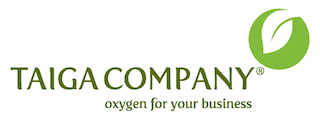Addressing The Challenges When Reducing Energy Consumption
The demand for energy has grown exponentially due to population growth, industrial expansion, and the increasing reliance on digital technologies. However, this surge in energy use comes at a steep cost, contributing to environmental degradation, climate change, and resource depletion.
The impact of unchecked energy consumption is becoming increasingly evident, with rising greenhouse gas emissions, more frequent extreme weather events, and growing pressure on natural resources. This highlights the urgent need to reduce energy consumption, both for businesses and individuals, to mitigate these risks and ensure a sustainable future.
Reducing energy consumption is essential. However, despite the clear benefits, there are challenges that must be navigated in the process.
The Role of Energy in Daily Life
Energy, particularly electricity, is integral to modern life. It powers our homes, workplaces, schools, hospitals, and transportation systems. From lighting and heating to powering electronic devices and even AI, electricity is the backbone of every interaction and activity in today's world. Businesses rely on a stable energy supply to maintain operations, drive production, and support technological innovations.
Similarly, individuals depend on electricity for everything from cooking and communication to entertainment and education.
Given this deep reliance on energy, it is evident that society and infrastructure are built around the assumption of a constant, reliable energy supply. This dependency creates a complex challenge when considering the need to reduce energy consumption. Simply put, there is no viable alternative to energy in its many forms; we cannot "turn off the lights" on a global scale. The challenge, therefore, lies in finding ways to reduce waste and improve efficiency while maintaining the energy supply necessary for daily life.
Reducing Waste: A Shared Responsibility
One of the most effective ways to reduce energy consumption is by minimizing waste, both in businesses and at home. Energy waste occurs when energy is used inefficiently or unnecessarily. Changes in daily routines can collectively make a big difference in reducing energy consumption.
Considering Green Alternatives
In addition to reducing waste, exploring green alternatives is another crucial step in minimizing energy consumption. Renewable energy sources, such as solar, wind, and hydroelectric power, offer cleaner and more sustainable options compared to fossil fuels. By transitioning to renewable energy, both businesses and individuals can reduce their carbon footprint and contribute to a more sustainable energy future.
However, adopting green alternatives requires careful consideration of the costs, benefits, and feasibility of these options. For businesses, this might involve investing in on-site renewable energy generation or purchasing green energy from suppliers. For individuals, installing solar panels or choosing renewable energy plans from utility providers are viable steps.
Encouraging Users to Manage Their Energy Needs
To further promote energy conservation, demand side response (DSR) programs offer a promising approach. These programs encourage energy users to adjust their consumption patterns in response to supply conditions, such as reducing usage during peak demand periods. Energy providers can create incentives for users to participate in DSR programs.
DSR programs empower consumers to take control of their energy usage, making them active participants in the effort to reduce overall energy consumption.
Reducing energy consumption is not just a necessity; it is a responsibility that falls on everyone, from large corporations to individual households. While energy is indispensable to modern life, it is crucial to find ways to use it more efficiently and sustainably. By reducing waste, exploring green alternatives, and encouraging mindful energy use, we can address the challenges of increased energy consumption and protect our planet for future generations.


